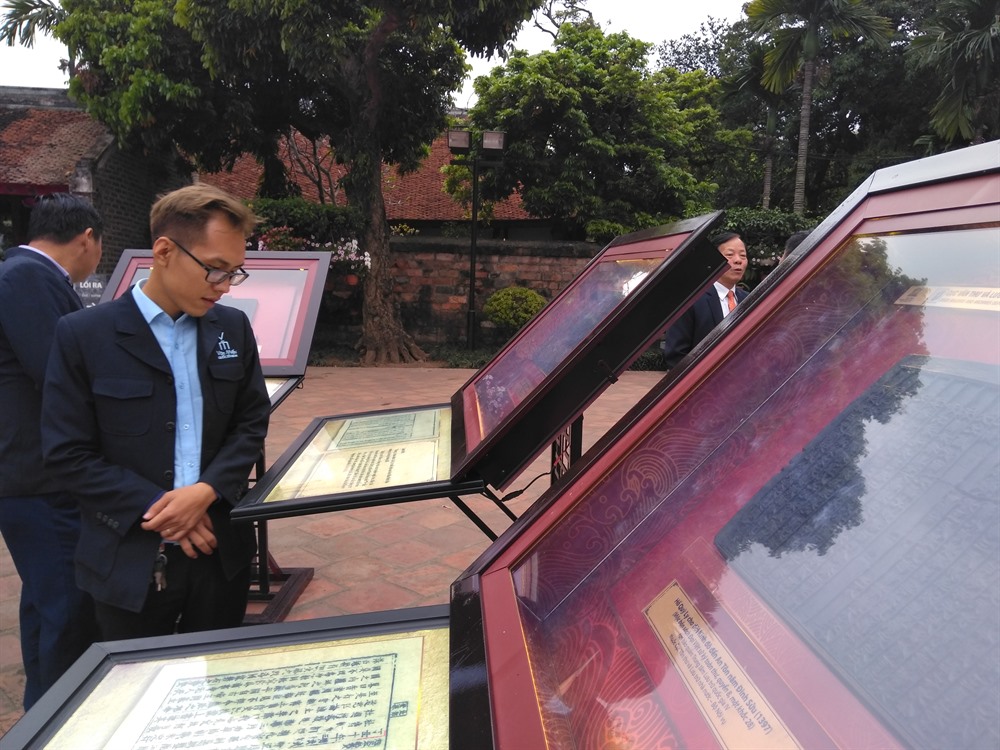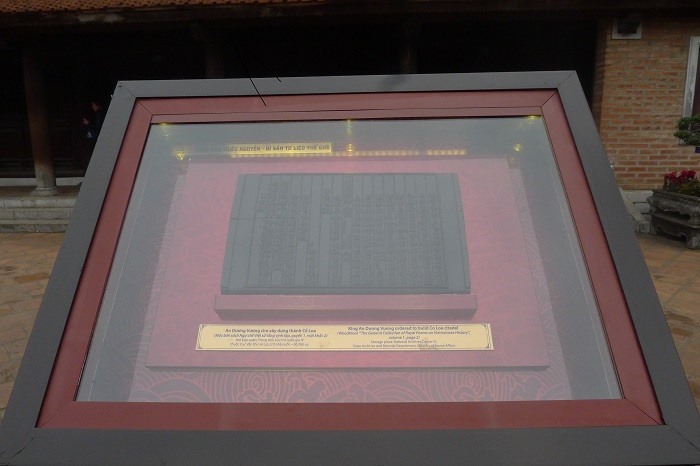 Life & Style
Life & Style

King Minh Mệnh (1791–1841) proclaimed Phú Xuân (the former name of Huế) the perfect place to put the country’s capital in The Veritable Records of Đại Nam.
 |
| A visitor looks at an original Nguyễn Dynasty woodblock on display at the exhibition. — VNS Photo Minh Thu |
HÀ NỘI — King Minh Mệnh (1791 – 1841) proclaimed Phú Xuân (the former name of Huế) the perfect place to put the country’s capital in The Veritable Records of Đại Nam.
“No place is like Phú Xuân; it’s located on high and bright land, near the peaceful mountains and rivers… It’s the best capital of the kings,” he wrote.
A woodblock carved with these words is on display at an exhibition at Hà Nội’s Temple of Literature.
The exhibition, “Country Name and Capitals of Việt Nam in Woodblocks of Nguyễn Dynasty (1802 – 1945)”, showcases 32 documents revealing the establishment and changes of the names and capitals of Việt Nam throughout history. The exhibition displays 20 original woodblocks preserved by the National Archives Centre No 4 under the State Records of Management and Archives Department of Việt Nam (Ministry of Home Affairs).
“The exhibition introduces researchers as well as domestic and foreign visitors to the will for independence, the spirit of self-respect and pride of the Vietnamese ancestors,” said Đặng Thanh Tùng, director of the department.
“The exhibition reveals the origin and meaning of each country name and capital, helping visitors gain knowledge on the history of nation-building and defence.”
“The country’s name is officially used in diplomatic relations, legislation and business,” Tùng said. “The name indicates the orthodoxy of a dynasty or government. Additionally, the country name expresses the national sovereignty and political regime of a nation in international relations. Along with the country name, the capital city is always highly valued by state institutions.”
Since the establishment of the country, Vietnamese emperors have changed the name of the country and its capital city many times to suit the current situation.
The exhibition highlights the value of Nguyễn Dynasty woodblocks and gives people a chance to approach rare documents, according to Lê Xuân Kiêu, director of the Văn Miếu – Quốc Tử Giám Cultural and Scientific Centre.
“In particular, the establishment of the country name and proclamation of the kings of the Vietnamese dynasties showed national self-esteem with such names as Đại Cồ Việt and Đại Việt be on a par with the Song or Ming dynasties of China or Đại Nam to be on a par with the Qing Dynasty,” he said.
“The changes of the capital also showed a deep consideration for the selection of significant lands gathering the good conditions of traffic and geography,” he said. “Inheriting the national tradition, after successfully implementing the August Revolution and fighting for reunification of the country, our State took the title of the Socialist Republic of Việt Nam and set the capital in Hà Nội, the capital of a thousand years of civilisation.”
The blocks have Chinese and Chinese-transcribed Vietnamese script engraved in reverse on wood to print books and documents about social standards, articles on the lives and careers of the aristocracy and records of historical events. They were recognised as a World Documentary Heritage by UNESCO in 2009, represent an important part of the country’s feudal history.
The exhibition will run until March 25 at the Temple of Literature, 58 Quốc Tử Giám Street, Hà Nội. — VNS
 |
| A woodblock with information recording the establishment of a capital city in Cổ Loa (now Đông Anh District of Hà Nội) under King An Dương Vương’s reign (200BC). |




